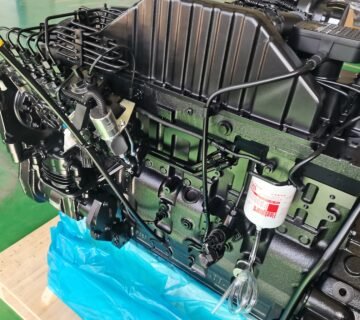The Truth About Biodiesel Compatibility with Cummins Diesel Engines
As industries and fleets worldwide strive to reduce carbon footprints, biodiesel has emerged as a leading lower-carbon alternative to traditional diesel. For Cummins diesel engine users, understanding the compatibility, benefits, and limitations of biodiesel is critical to making informed decisions. This article explores Cummins’ position on biodiesel, supported by technical insights and real-world applications, to clarify myths and highlight actionable truths.

Cummins’ Biodiesel Compatibility: Approved Engines and Blends
Cummins has long supported the use of biodiesel blends in its engines, provided they meet strict quality standards. As of 2025, most Cummins on-highway engines—including the ISX, ISM, ISL, ISV5.0, and ISB models built after January 2007—are approved for B20 biodiesel blends (20% biodiesel, 80% petroleum diesel). Off-highway engines like the QSK, QSX, QSM, and QSL series also support B20 when manufactured after 2007.
However, compatibility depends on adherence to ASTM D6751 specifications for pure biodiesel (B100) and ASTM D7467 for B6–B20 blends. These standards ensure fuel stability, cold-weather performance, and minimal contaminants. For older engines or non-certified models, Cummins recommends sticking to B5 blends (5% biodiesel) to avoid risks like filter plugging or injector deposits.
Performance Benefits: Cetane, Lubricity, and Emissions
Biodiesel’s higher cetane number (45–55 vs. 40–45 for petroleum diesel) ensures faster ignition, smoother combustion, and improved cold-start performance—critical for fleets operating in harsh climates. Additionally, biodiesel’s superior lubricity compensates for the reduced sulfur content in modern ultra-low-sulfur diesel (ULSD), protecting fuel pumps and injectors from wear.
From an environmental perspective, B20 biodiesel blends reduce greenhouse gas emissions by approximately 15%, while B100 can slash CO₂ by up to 74% over its lifecycle. This aligns with Cummins’ Destination Zero strategy, which prioritizes lower-carbon fuels to meet global sustainability goals.
Challenges and Considerations
While biodiesel offers clear advantages, its adoption requires careful management:
- Cold-Weather Operability: Biodiesel gels at higher temperatures than petroleum diesel. Blending with kerosene or using winter additives is essential in freezing climates.
- Energy Density: Biodiesel contains 5–7% less energy per gallon, potentially reducing fuel economy by 2–5%.
- Storage Stability: Biodiesel degrades faster than conventional diesel. Proper storage (low moisture, cool temperatures) and using BQ-9000-certified fuel are critical.
Cummins emphasizes that engine warranties cover defects in materials or workmanship—not fuel-related issues. Using non-compliant biodiesel voids warranty claims, making supplier verification essential.
Renewable Diesel vs. Biodiesel: Key Differences
Renewable diesel (HVO) is often confused with biodiesel, but the two differ significantly. While biodiesel (FAME) is produced via transesterification, renewable diesel undergoes hydrotreating, resulting in a chemically identical product to petroleum diesel. Cummins approves 100% renewable diesel (R100) for engines like the B6.7, L9, and X15 series, offering up to 90% GHG reductions without blending.
For fleets prioritizing drop-in compatibility and cold-weather performance, renewable diesel may be preferable. However, biodiesel remains a cost-effective option for gradual decarbonization.
The Future of Biodiesel in Cummins’ Ecosystem
Cummins continues to innovate through platforms like HELM™, which supports multiple fuels (diesel, natural gas, hydrogen) on a common architecture. This flexibility ensures fleets can transition to biodiesel or renewable diesel without overhauling infrastructure.
The U.S. Energy Information Administration (EIA) projects renewable diesel production to reach 5.9 billion gallons annually by 2025, signaling growing availability. Cummins’ commitment to B20 compatibility and partnerships with certified fuel producers ensures customers can adopt biodiesel confidently.

Conclusion
Biodiesel compatibility with Cummins diesel engines is both proven and practical—when users prioritize quality, blend limits, and operational conditions. By leveraging B20 biodiesel blends, fleets achieve immediate emissions reductions without sacrificing performance. Meanwhile, advancements in renewable diesel and multi-fuel platforms like HELM™ position Cummins as a leader in sustainable power solutions.
For optimal results, always source ASTM-compliant biodiesel, consult engine-specific guidelines, and monitor fuel systems regularly. With careful planning, biodiesel becomes not just a alternative, but a strategic asset in the journey toward net-zero operations.





No comment